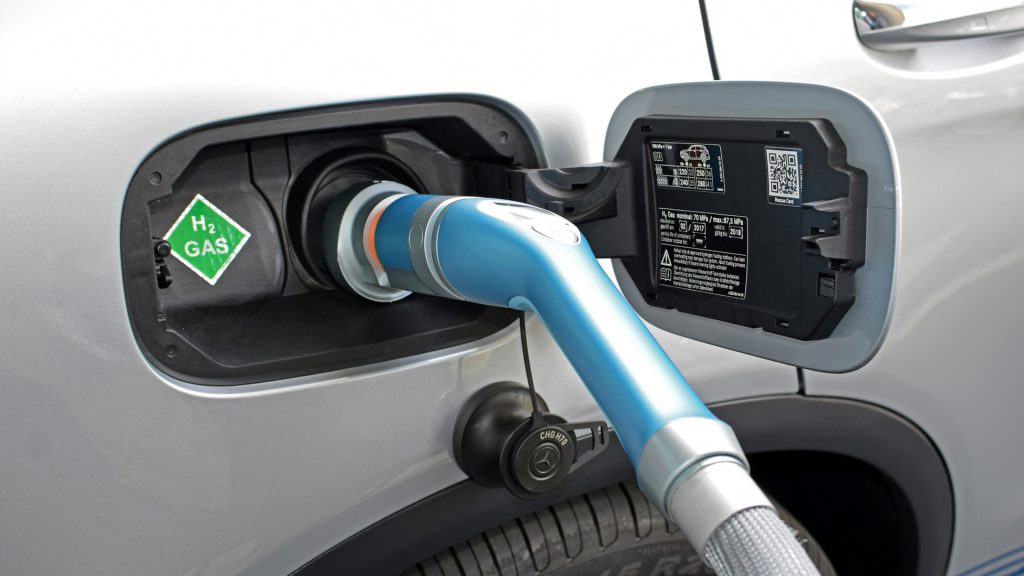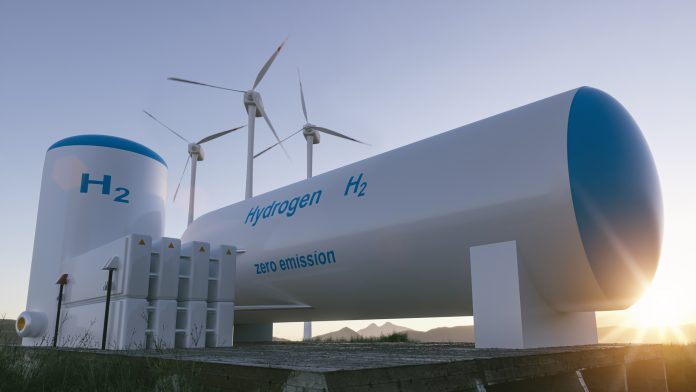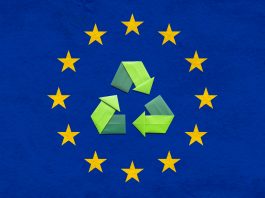Kitti Nyitrai, a member of the European Energy Commissioner Kadri Simson’s Cabinet, discusses the future of renewable hydrogen, from policy frameworks to R&D, and its key role in Europe’s green future.
So-called ‘renewable hydrogen’ (also called ‘green hydrogen’) is expected to play a key role in the decarbonisation of sectors where other alternatives might not be feasible or be more expensive. This includes heavy-duty and long-range transport and energy-intensive industrial processes.
According to the European Commission, the EU strategy for energy system integration will outline a vision to create a smarter, more integrated and optimised energy system, in which all sectors can fully contribute to decarbonisation. Hydrogen will be an important element of that strategy, but its key role and its wider scope warrant a specific approach. Meanwhile, a new dedicated strategy on hydrogen in Europe will bring together different strands of action.
The new hydrogen strategy will explore the potential of clean hydrogen to help the process of decarbonising the EU economy in a cost-effective way, in line with the 2050 climate-neutrality goal, set out in the European Green Deal. It should also contribute to the recovery from the economic effects of COVID-19.
The Innovation Network’s International Editor, Clifford Holt, spoke to Kitti Nyitrai, a member of European Energy Commissioner Kadri Simson’s Cabinet, about how the potential of green hydrogen in Europe can be realised.
To begin, could you outline how important hydrogen is to Europe’s green energy future?
Hydrogen is a promising new energy carrier that can help decarbonise sectors that seemed so far out of reach, such as the chemical and steel industries, but also certain areas of transport. The share of hydrogen in the EU’s energy consumption could reach 10-16% by 2050, up from around 2-3% today. Our policy priority is clearly renewable hydrogen, produced from renewable electricity and water, as it has the biggest decarbonisation potential and overall benefits because it can also be used to store energy and manage our electricity grid.
What are the main points being addressed in the Hydrogen Strategy – such as the decarbonisation of sectors like industry and transport, storage solutions, and markets and infrastructure, for instance?
The strategy puts forward a Roadmap for the development of renewable and low-carbon hydrogen in the EU and provides a full value chain approach to make it happen. The Commission has set ambitious targets, notably the installation of 6GW of electrolysers by 2024 and 40GW by 2030 to produce renewable hydrogen. We expect renewable hydrogen ecosystems to first start developing locally, in so-called ‘hydrogen valleys’, and to reach scale over time, developing into a larger, cross-border hydrogen market. As hydrogen is a new player in the energy system, our current rules do not fully cover it or recognise its benefits. Therefore, we are working to create an enabling framework with legislation to facilitate the production, trade, transport, and use of renewable hydrogen in particular. This means that we need to review legislation, including the Renewable Energy Directive and legislation to facilitate and incentivise the market entry for renewable and low-carbon gases.
When it comes to supply and demand, what do you feel will be the biggest challenges in scaling up and decarbonising productions, as well as in developing the market and the necessary standardisation?
When it comes to scaling up hydrogen, the challenge is to ensure that the demand for and supply of renewable and low-carbon hydrogen go hand-in-hand. We have to overcome the current chicken-or-egg situation. We have set up the European Clean Hydrogen Alliance, and one of its main tasks is to create a credible project pipeline on both these sides. At the same time, the Commission is working on the concrete measures, incentives, and legislation, announced in the strategy.
The first call for proposals under the Innovation Fund and the first Green Deal call, including for a 100MW electrolyser, were launched and closed, and we were pleased to see active interest from innovative hydrogen projects. We are working on further incentives for the uptake of clean hydrogen solutions, notably on the pilot ‘carbon contracts for differences’ programme to overcome the initial higher cost until renewable and low-carbon hydrogen production scale up.
We also tabled the proposal for a revised regulation for trans-European networks, in which we propose to include the new infrastructure categories of hydrogen pipelines and electrolysers. The measures still to come this year include a common certification system for renewable and low-carbon hydrogen, as well as market rules to trade clean hydrogen within the EU and also, in the future, with international partners.
Further to this, is there a sense that, moving forwards, Europe will necessarily become dependent on international partners to satisfy demand? How could this be managed?
Rather than a dependence, I would look at renewable hydrogen as a new opportunity for engagement with the EU’s international partners. There is great cost-effective hydrogen potential in our close neighbourhood. In particular, Morocco is well positioned to produce significant amounts of solar power at very competitive costs, and with it renewable hydrogen, thereby providing new business opportunities for both Morocco and Europe. The political dialogue on this has already started.

What are your thoughts on current progress being made towards national hydrogen strategies (i.e. in France and Spain) and how can a harmonised approach be achieved in the future across the EU?
It is great to see that an increasing number of Member States recognise the benefits of clean hydrogen and are developing national hydrogen strategies. I think the EU strategy provides a good framework for this. Based on the national strategies, the Commission can monitor whether or not we are on track to achieve the ambitious goals put forward in the EU Hydrogen Strategy, including the targets (six and 40GW) for installed electrolyser capacity to produce renewable hydrogen.
The Commission’s aim is to create an enabling framework and appropriate rules for a hydrogen market to emerge in the EU. There are areas where we need a common approach, such as in the certification of renewable and low-carbon hydrogen and the planning of cross-border infrastructure for cost-efficient hydrogen transport, once volumes scale up. What we also see from the national strategies is that Member States have different potential and plans both for the production and consumption of renewable hydrogen, so we expect international projects and cross-border trade to emerge in the future.
Finally, given the advanced nature of other renewable energy technologies (wind, solar, etc.), how would you like to now see research and innovation funding be directed towards hydrogen, and what plans are already in place?
As previously mentioned, the first call for proposals under the Innovation Fund and the Green Deal call under Horizon 2020 have been concluded. The Innovation Fund alone attracted over 50 applications in the field of renewable and low-carbon hydrogen in its first phase. Several areas require further research and innovation to become competitive. For example, scaling up the size of electrolysers into the 100MW or even GW range requires innovative solutions, as do some of the end-uses, including fuel cell technologies. But research will also focus on safety standards and environmental impact, as well as the supply and reuse of critical raw materials. The new partnerships under the Horizon Europe programme, in particular the Clean Hydrogen Partnership, will support these actions.
I would like to add one last consideration: hydrogen has reached a turning point and significant momentum. Right now, the conditions are there for hydrogen to become an important player in the clean energy transition. First, with the European Green Deal and the goal to reach climate neutrality by 2050, we have a clear direction of travel and the ambition that pulls new clean energy solutions into the market. Second, with the spectacular cost decrease of renewable electricity production, green hydrogen will become cost-competitive and could, in the coming decade, outbid conventional technologies. In the future integrated energy system, renewable hydrogen can thus provide cost-effective solutions to store energy and to manage an electricity system largely based on variable renewables. Last but not least, the EU agreed on its biggest common budget in history, €1.8 trillion, including the Recovery and Resilience Facility. In the wake of the COVID-19 crisis, this is a unique opportunity to rebuild our economy better and cleaner and to invest in new green solutions like hydrogen.
Kitti Nyitrai
Member of Cabinet of Commissioner
Kadri Simson
European Energy Commissioner
European Commission
Tweet @NyitraiKitti @KadriSimson
https://ec.europa.eu/commission/commissioners/2019-2024/simson_en
Please note, this article also appears in the fifth edition of our quarterly publication.









